Then and now: Bali bombings ground zero, 20 years later
Oct 12 marks the 20th anniversary of the 2002 Bali bombings. In the final part of a series, CNA revisits ground zero and looks at how it has changed.
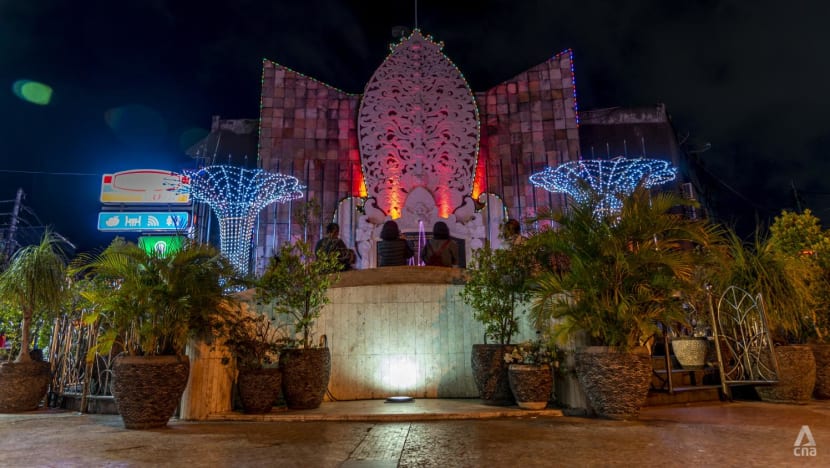
The 2002 Bali bombings memorial in Kuta, Bali. More than 200 people from 22 different nationalities were killed in the incident, making it the worst terrorist attack in Indonesia's history. (Photo: CNA/Nivell Rayda)
BALI, Indonesia: It was a Saturday night and the row of nightclubs lining Bali’s Legian Road was crammed with club-goers as they danced the night away to the rapid beat of house music and colourful light shows.
The one-way thoroughfare, famous for its nightlife, was lined with cars and motorcycles while its pavements were filled with tourists hoping to paint the town red.
However, there were those who came for a more sinister reason. Three members of the Al-Qaeda-linked Jemaah Islamiyah (JI) terrorism network were there to launch an attack so calamitous it would be known as the deadliest terrorist attack in Indonesia’s history.
One of the three was Ali Imron who was tasked with overseeing the attack. The other two served as suicide bombers.
Not much is known about the bombers other than the fact that they had many aliases and that the people involved in the attack referred to them as “Iqbal One” and “Iqbal Two”.
On Oct 12, 2002, Ali Imron instructed Iqbal One to carry a backpack filled with 1kg of explosives and make his way inside a crowded bar called Paddy’s Pub.
Meanwhile, Iqbal Two was told to drive a white Mitsubishi van packed with hundreds of kilograms of explosives.
At around 11pm, Iqbal One pulled the trigger, killing several people instantly and injuring many others. Survivors recounted seeing a ball of fire engulfing the interior of the property, sending patrons scrambling for their lives.
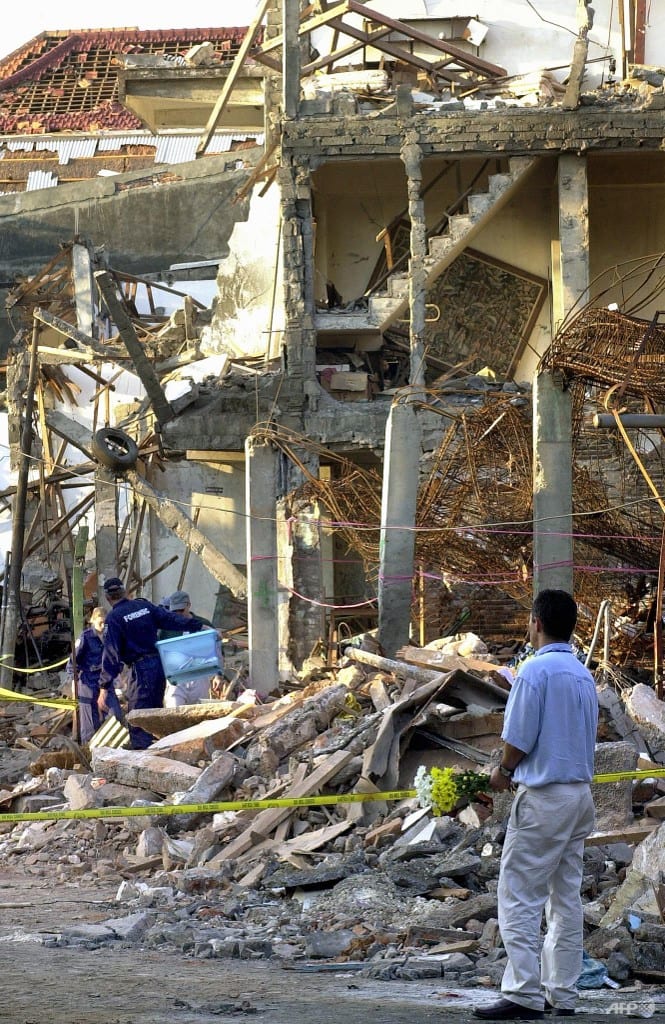
The blast also knocked out an electrical pole nearby which caused the entire neighbourhood to be in pitch black condition.
Less than a minute later, as people frantically rushed out of Paddy’s Pub, Iqbal Two detonated his explosives just as his van reached Sari Club, less than 40m away from the pub.

The second blast completely decimated Sari Club while the parking building in front of the club was levelled to the ground. Buildings within a 20m radius of the van were badly damaged and the blast ruptured glass doors and windows of stores and restaurants as far as one kilometre away.
Cars and motorcycles were lifted off the ground by the shock wave. The blast was so powerful it can be heard from 9km away and left a crater around 1m deep where the van once was.
“FOREVER LODGED IN MY MIND”
When emergency workers and firefighters arrived at the scene, Legian Road was engulfed in flames. The first responders recounted hearing explosions from vehicles’ fuel tanks, intensifying the fire even further.
Jatmiko Bambang Supeno, who was Sari Club’s assistant manager at the time, recounted seeing lifeless bodies being consumed by the raging fire. “There were many people at the bar, they were all in flames,” he told CNA.
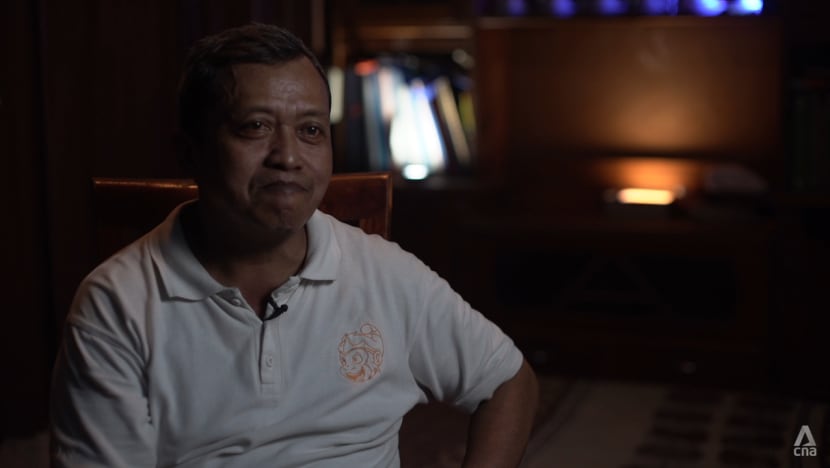
Gone was the laughter and chatter of tourists and the thumping sound of house music normally found on Legian Road. Instead, the air was filled with sounds of people frantically screaming for help and the constant roaring of ambulances coming and going.
With Legian still in flames, emergency workers and volunteers were only able to tend to the injuries of those who had made it out of the raging fire. Hundreds had suffered severe burns and injuries.

“I can never forget that night. (I remember) the sound of people crying and screaming ‘Help me! Help me!’,” said Agus Bambang Priyanto, who was a Red Cross volunteer at the time.
“The moment I carried one victim to an ambulance. I remember the look he gave. He was saying things, babbling as if trying to utter his dying wish. These things will be forever lodged in my mind,” he told CNA.

It was 2am when the firefighters managed to contain the fire, allowing Priyanto and other emergency workers to move closer to the bomb site. They found charred bodies, some of whom were pinned beneath the rubble and debris.
“Some of the dead were completely burned beyond recognition. Some were reduced to skeletons while the rest (of the bodies) were completely incinerated. We found limbs. We found severed heads,” the now 63-year-old recounted.
It took workers eight hours before the last body was evacuated from the scene.

HOSPITAL “WAS LIKE A MARKET”
Six kilometres away at Sanglah General Hospital, medical workers were swamped with hundreds of incoming patients.

“The emergency unit was like a market. In 20 minutes, we were running out of intravenous fluids because there were so many patients,” I Gusti Lanang Made Rudiartha, the then director of the hospital, told CNA.
“There were 202 people killed. My morgue could only fit 10 bodies. So there were body bags lying on our hallways. We had so many patients to care for we only had time to think about what to do with (the bodies) the following day.”
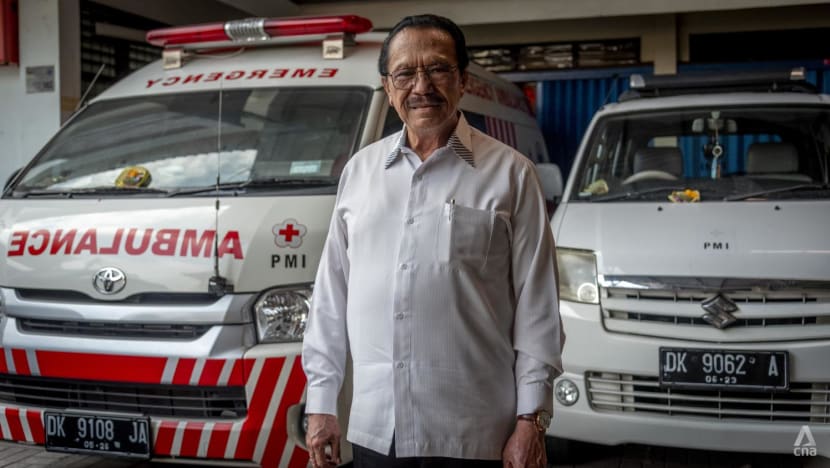
As some of the bodies were severely charred, it took forensic teams six months before all 202 deceased victims were identified.
Nyoman Rencini, the widow of 2002 Bali bombings victim Ketut Sumerawat, said it took medical examiners three months before the DNA samples provided by her family matched with one of the bodies. The family then rushed to Sanglah hospital to see the remains.
“I have never seen a dead body in such a (horrific) state. My husband was a tall and strong man. But I saw his body hunched up like a dog inside a body bag. I couldn’t recognise him,” Rencini told CNA as she struggled to contain her emotions.
“I was lost for words. I was speechless when I saw such (a horrific) sight. All I could do was cry. Why did my husband have to (end up) like that?”

The attacks also left many to be permanently disabled while others had to go through years of therapy to treat their physical and psychological trauma.
But the adversity also brought the people of Bali closer together.
“There were people offering to become volunteers. There were people who gave victims and their families blankets and towels. There were people offering food for the staff and volunteers. Hotels even sent their workers to help us clean the hospital,” Sanglah hospital former director Rudiartha recounted.

WHAT IT IS LIKE TODAY
Twenty years later, much has changed on Legian Road. The thoroughfare is still famous for its nightlife but it also attracts visitors looking to pay their respects.
A monument of carved limestone in a shape inspired by Balinese shadow puppetry now stands where the parking building was once located.

Engraved on a large marble plaque are the names of all 202 people who were killed in the attack.

The monument has become a prominent landmark for the area. To the displeasure of some of the victims’ families, it has also become a selfie spot.

“People need to show more respect to the monument,” Bali bombing victim Thiolina Marpaung told CNA. “This is a place of mourning. A shrine.”
The Paddy’s Pub has moved to a new location less than 100m down the road.
For years, the site of the first blast was occupied by a nightclub before it went bankrupt because of the pandemic. A deserted two-storey structure now stands at the location.
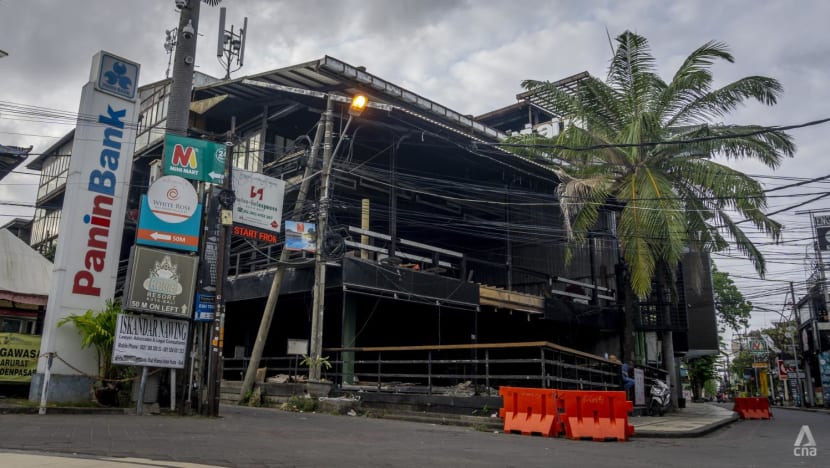

Several victims and their families had been trying to buy the property for more than a decade in the hope of converting it into a so-called Peace Park containing information about the 2002 attack.
The Bali government has tried to intervene by offering the owner of the property another location. But so far, these efforts have been fruitless.
Marpaung said she supported the idea of transforming the property into a peace park. “People need to know what happened here 20 years ago to make sure that this will never ever happen again,” she said.















